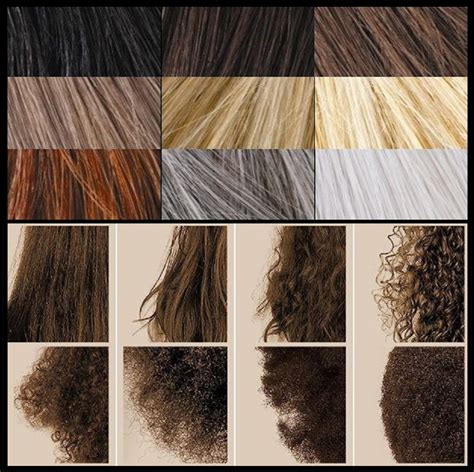Introduction
Human hair color is a fascinating and complex trait that has captivated scientists and historians for centuries. From the fiery hues of redheads to the shimmering shades of black, hair color has played a significant role in human culture, influencing everything from fashion to societal norms. In this comprehensive guide, we delve into the science, history, and cultural significance of human hair color, exploring its genetic basis, its evolution over time, and its impact on our identity and interactions.

The Science of Hair Color
Hair color is primarily determined by two types of pigment: melanin and pheomelanin. Melanin is responsible for brown and black hair, while pheomelanin gives hair red and yellow hues. The amount and ratio of these pigments in the hair shaft ultimately determine an individual’s hair color.
-
Melanin: Melanin is a dark, waterproof pigment that gives hair its brown or black color. It is produced by cells called melanocytes, which are located in the hair follicles. Melanin is also responsible for protecting hair from damage caused by ultraviolet (UV) radiation.
-
Pheomelanin: Pheomelanin is a yellow-red pigment that produces blonde, red, and orange hair colors. It is also produced by melanocytes, but in smaller amounts compared to melanin. Pheomelanin is more susceptible to fading and damage from environmental factors.
The Genetics of Hair Color
Hair color is a polygenic trait, meaning that it is influenced by multiple genes. The two main genes involved in hair color determination are MC1R and SLC45A2.
-
MC1R (Melanocortin 1 Receptor): The MC1R gene plays a critical role in determining the type and amount of melanin produced by melanocytes. Mutations in the MC1R gene can lead to red hair, blonde hair, or premature graying.
-
SLC45A2 (Solute Carrier Family 45 Member 2): The SLC45A2 gene is involved in the transport of amino acids into melanocytes. Mutations in this gene can result in brown hair or black hair.
In addition to these two major genes, several other genes have been linked to hair color, including OCA2, TYR, and SLC24A5.
The Evolution of Hair Color
Human hair color has evolved significantly over time, driven by both natural selection and sexual selection.
-
Natural Selection: Hair color has played a role in protecting humans from the harmful effects of UV radiation. Darker hair colors, such as brown and black, provide better protection from UV damage than lighter colors, such as blonde and red. In regions with high levels of UV radiation, darker hair colors became more prevalent through natural selection.
-
Sexual Selection: Hair color has also been influenced by sexual selection, as certain hair colors may have been perceived as attractive or desirable by potential mates. For example, red hair is thought to have been more common in ancient times, and it may have been associated with fertility and reproductive success.
The Cultural Significance of Hair Color
Hair color has played a significant role in human culture throughout history.
-
Social Status: In many cultures, hair color has been used to denote social status. For example, in ancient Egypt, blonde hair was associated with beauty and royalty. In China, black hair was seen as a symbol of good luck and prosperity.
-
Identity: Hair color can be an important part of an individual’s identity. It can influence self-perception, societal interactions, and even career opportunities.
-
Fashion: Hair color has been a major fashion trend for centuries. People have dyed their hair to change their appearance, express their individuality, or follow the latest styles.
Hair Color Variations and Statistics
There is a wide range of hair color variations among human populations.
-
Natural Hair Colors: According to the World Health Organization (WHO), the most common hair color globally is black or dark brown, which accounts for approximately 85% of the world’s population. Blonde hair is the second most common hair color, with an estimated 14% of the world’s population having blonde hair. Red hair is the rarest hair color, with only about 1-2% of people having naturally red hair.
-
Hair Color Distribution: The distribution of hair color varies significantly across different regions of the world. For example, black or dark brown hair is most common in Africa, Asia, and Latin America. Blonde hair is most common in Northern Europe, while red hair is most prevalent in Scotland and Ireland.
Why Hair Color Matters
Hair color can have a significant impact on an individual’s life in several ways:
-
Self-Perception: Hair color can affect a person’s self-esteem and body image. For example, a study by the University of California, Santa Barbara found that people with blonde hair tend to have higher self-esteem than those with red hair.
-
Societal Interactions: Hair color can influence how others perceive an individual. For example, a study by the University of Arkansas found that bl
